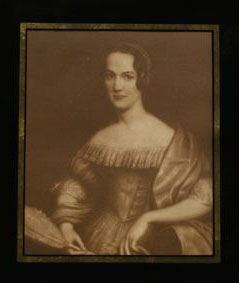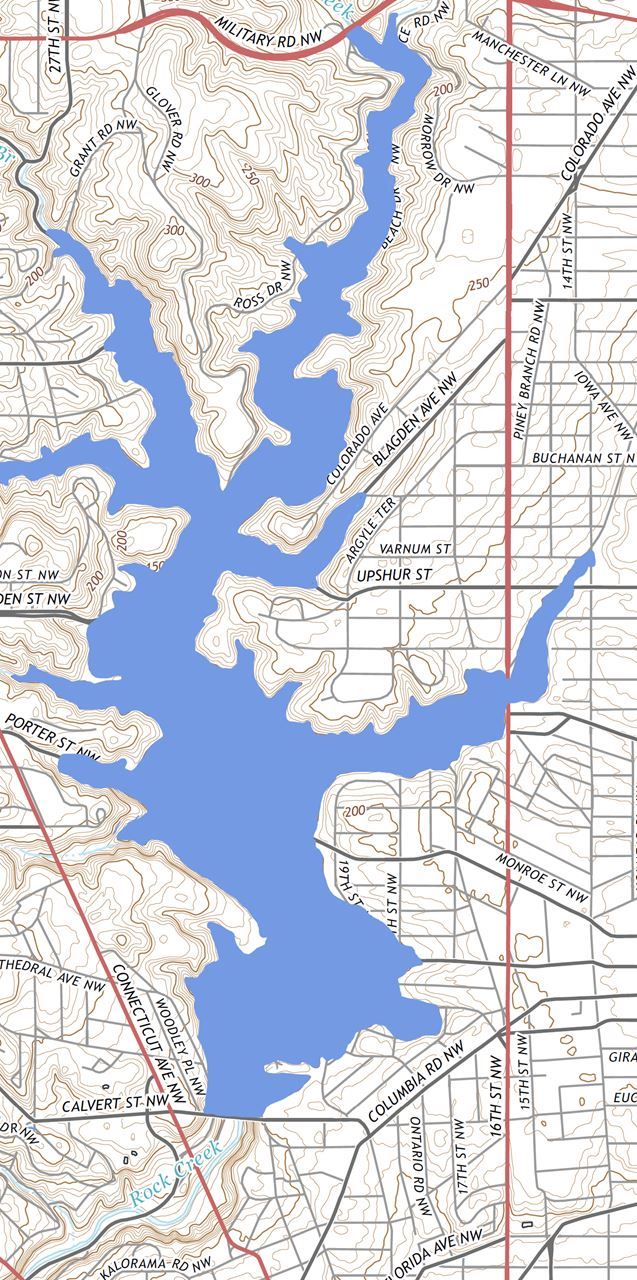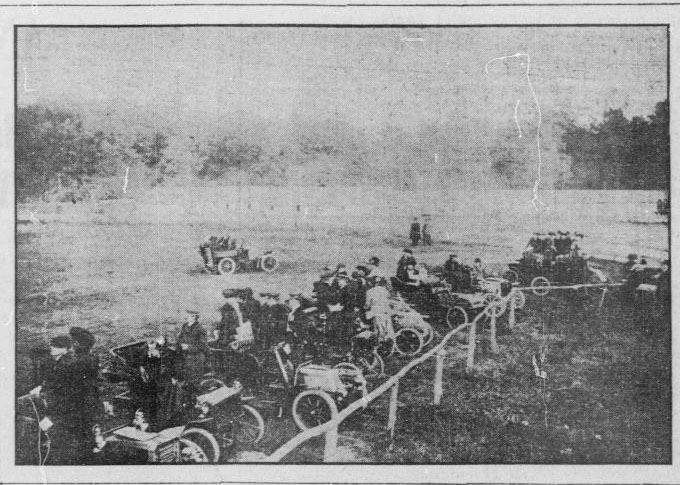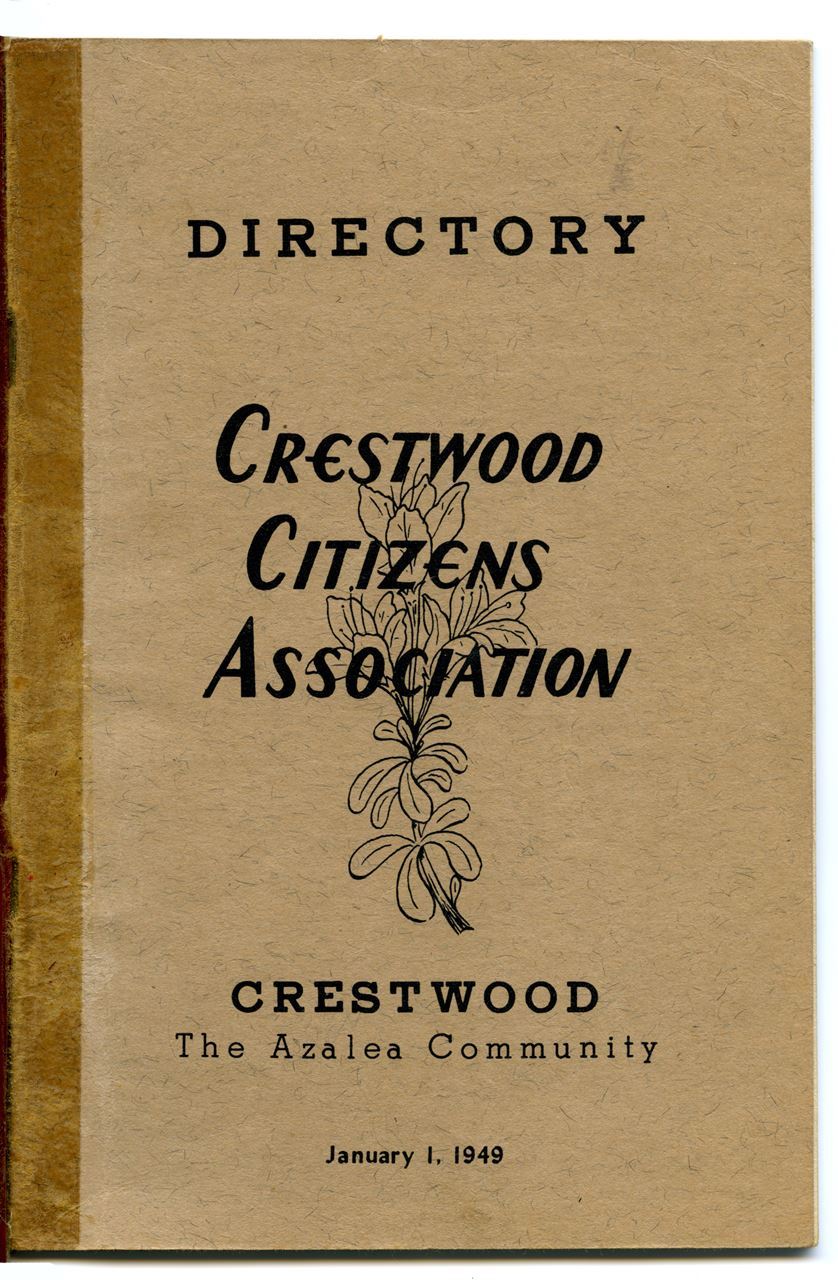by David Swerdloff

November 1853: The Blagden family suffers a tragedy shortly after giving up their farm on a parcel called St. Elizabeth (which they sold at a discount to allow the construction of a federal mental hospital). Before moving into their new property – the Argyle estate that became the Crestwood neighborhood – matriarch Emily Blagden dies. Thomas Blagden goes on to marry her sister Laura. While he passed away in 1870, Laura continued to live in the manor house that stood near the present-day corner of 18th and Varnum Streets until her death in 1908.

November 1864: An ad appears in the Washington Post from the Blagden farm, which is known for its livestock. The classified notice offers a reward of five dollars for “the recovery of a three-year-old white and yellow bull that strayed from Thos. Blagden’s farm on the Piney Branch road.”

November 1883: Captain Richard Hoxie, the superintendent of DC’s water and sewer system, proposes the construction of a dam above Georgetown to create a four-mile-long reservoir. The artificial lake would inundate about 1,300 acres of Rock Creek valley mainly south of Crestwood. Hoxie declares that the flooded land was otherwise “nearly all of it worthless for any other purpose, being precipitous, rocky hillside, covered with thickets of laurel and small timber.”
November 1888: To provide momentum to the effort to create Rock Creek Park, banker Charles Glover leads a group of influential Washingtonians on a celebrated ride through Rock Creek valley on Thanksgiving Day. He then hosts a strategy session a few days later. Thanks in large part to their efforts, the Park would be established less than two years later.

November 1903: The Washington Times reports on one of the city’s earliest automobile races, which took place at the Brightwood Driving Park (located near where the tennis stadium is today). According to the story, “thirty miles an hour was made and easily exceeded at times…and had the track been large enough to let out the swift St. Louis car, the big Winston, or the flying Cadillac, to say nothing of the Stevens-Duryea, forty miles an hour would have been the record of the day.”
November 1906: The Capital Traction Company opens the extension of its streetcar line up 14th Street into Brightwood. The new line helps to spur development in Crestwood – especially near Decatur Street, the only road in the neighborhood that goes east to 14th.
November 1909: The Brightwood Driving Park, a horseracing venue since the 1840s or 50s, is forced to close when construction crews begin to build the extension of 16th Street through the center of the oval.
November 1928: A 300-million-candlepower searchlight sweeps the sky every two minutes from a site beside the Brightwood Reservoir (then located along 16th Street north of Colorado Avenue). Both that beacon and another by the District Building show area residents who leads in the day’s Presidential election. A flashing light signals that Herbert Hoover is ahead; a continuous beam indicates more votes for Al Smith.
November 1943: 71 Crestwood homeowners attend a House subcommittee hearing to support the rezoning of land at 16th and Shepherd Streets in order to prevent construction of the Crestwood Apartments. The Crestwood Citizens Association had been established in 1941 to oppose the apartment plan. The Association’s brief to Congress argues that the building “would result in the consequent defacement of Rock Creek Park and establish a precedent for the opening up of Sixteenth Street from Tiger Bridge north to the District Line to apartment houses… [and would] adversely affect the investment of the home owners living in the vicinity.” Resistance to the project generated several House and Senate bills and two Supreme Court decisions—and delayed construction until late 1949.

November 1948: Taking the advice of a neighbor who taught at the University of Maryland’s agriculture school in Beltsville, Crestwood residents vote to adopt the azalea as the community flower (with minority support for the cherry blossom and the dogwood). The Association goes on to persuade garden shops to offer discounts, and for years the Crestwood Directory identifies the neighborhood as “The Azalea Community.”
November 1950: The death of DC cinema mogul Carter T. Barron sparks a campaign to rename the Sesquicentennial Amphitheatre in his honor. Mr. Barron had led the effort to commemorate the 150th anniversary of the District of Columbia as the Nation’s Capital. His commission organized the construction of an outdoor stage for the presentation of a historic pageant each summer. The show, Faith of Our Fathers, lasted just two seasons–1950 and 1951. Thereafter, despite some neighborhood opposition, Carter Barron Amphitheatre was used for numerous concerts, plays and other performances.
November 1957: The Crestwood Citizens Association votes not to take a position on “the possibility of Upshur Street becoming a throughway… [and] the possible construction of the Upshur Street Bridge.” The proposed span would take Upshur Street west high above Rock Creek to connect with Tilden Street and Linnean Avenue. The Olmsted Brothers historic plan for Rock Creek Park had called for such a high level crossing in 1918—and similar schemes continued to be put forward over the years.